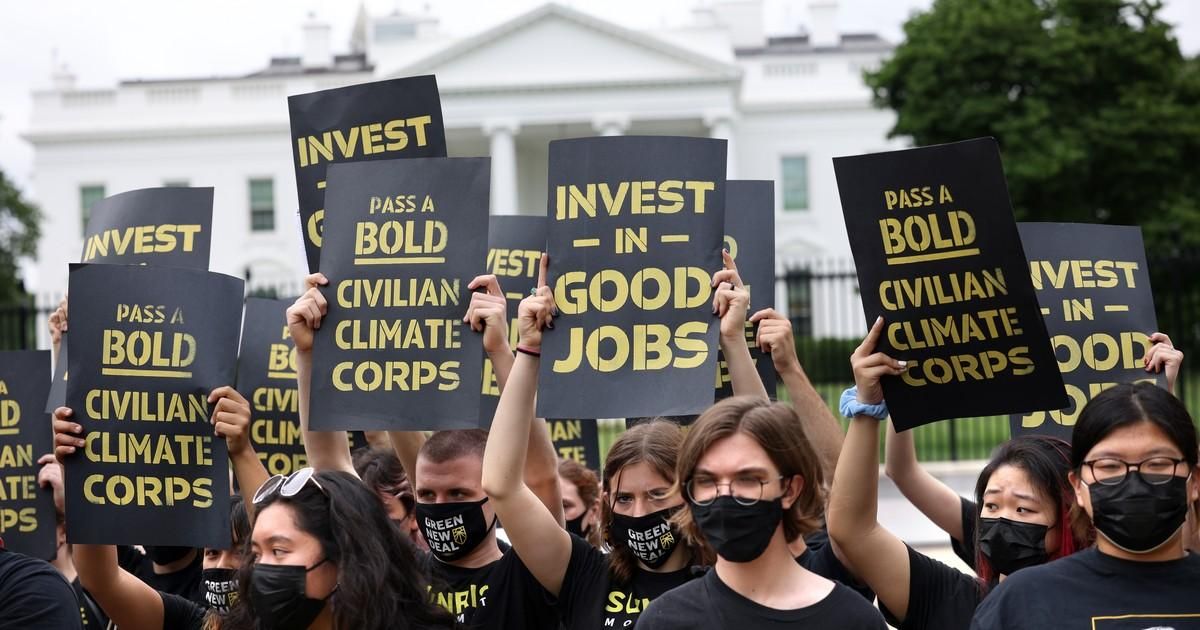
When you think of the New Deal, what comes to mind? For many Americans, the era has an enduring physical legacy in our parks, tree lines, and trails.
On Orcas Island in Washington, hundreds of young men with the Civilian Conservation Corps built Moran State Park’s idyllic trails, campgrounds, and watchtower. Ninety years later, recreationists still benefit from their labor as they hike towards sweeping views and splash in crystalline mountain lakes.
Today, we are once again facing severe and inter-connected economic and environmental crises.
From 1933 to 1942, President Franklin Delano Roosevelt’s Civilian Conservation Corps (CCC) enlisted over 3 million men between 18 and 25, planted 3 billion trees, fortified over 700 parks, and forged countless trails.
FDR touted the program’s multiple benefits. By participating in the “Nation’s fight against the Depression,” he said, corps members were creating “future national wealth” and “moral and spiritual value.”
Back then, policymakers were primarily motivated by sky-high unemployment. But they were also moved to action by the Dust Bowl, a human-created environmental disaster that destroyed livestock and crops across the central United States.
Today, we are once again facing severe and inter-connected economic and environmental crises. While streets flood and skies burn orange across the country, wealth inequality has skyrocketed—and young people confront a labor market with few good jobs.
To face these challenges, climate advocates are pushing to revitalize the Civilian Conservation Corps as a Civilian Climate Corps. They envision a program that not only meets the staggering scale of our problems, but is also more deeply rooted in justice and equity.
The Green New Deal Network’s THRIVE Agenda proposes investing $1 trillion per year over the next decade to create 15 million “Green New Careers,” over half of which would originate in underserved communities.
This would address serious flaws in the original CCC, which barred women, segregated Black and Indigenous workers from their white counterparts, and often developed land stolen from Native Americans. (Orcas Island’s Moran State Park, for example, was built atop Lummi and Salish indigenous land “owned” by wealthy local leader Robert Moran.)
Senate Majority Leader Chuck Schumer (D-NY) has promised to “fight to get the biggest, boldest CCC possible,” but views on the issue vary widely.
President Biden has supported a more modest $10 billion investment in a new CCC over 10 years, which could create tens of thousands of jobs. Some moderates are focused on scaling up the existing AmeriCorps program, which offers small stipends to 75,000 people per year for service projects.
On the bolder end, Senator Ed Markey (D-MA) and Representative Alexandria Ocasio-Cortez (D-NY) have proposed investing $130 billion over five years, a sum they say could support 1.5 million jobs.
To inspire broader public support, the Sunrise Movement and the Green New Deal Network have just launched the Green New Careers website at www.greennewcareers.org. Visitors can answer questions to learn about green jobs that might be right for them.
“What if,” asked Ocasio-Cortez at a recent rally, “in three months after the authorization, 250,000 young people were employed in a dignified job? What if this led to record performance in containing wildfires across our country and thousands of new trails?”
“The CCC under Roosevelt was the largest peacetime mobilization in American history,” she recalled. “And that is what this moment requires.”
Some communities are already building this better future. Last September, Orcas Island created its own CCC—complete with $15 hourly wages, partnerships with Indigenous experts, and long-term career training to fight fires and plant trees.
Funded by the local community foundation, Orcas Island’s CCC can employ eight people. Imagine how bright our future could be with programs like these on a national scale.
Why We Urgently Need a Civilian Climate Corps
Source: Articles Viral Post
0 Comments